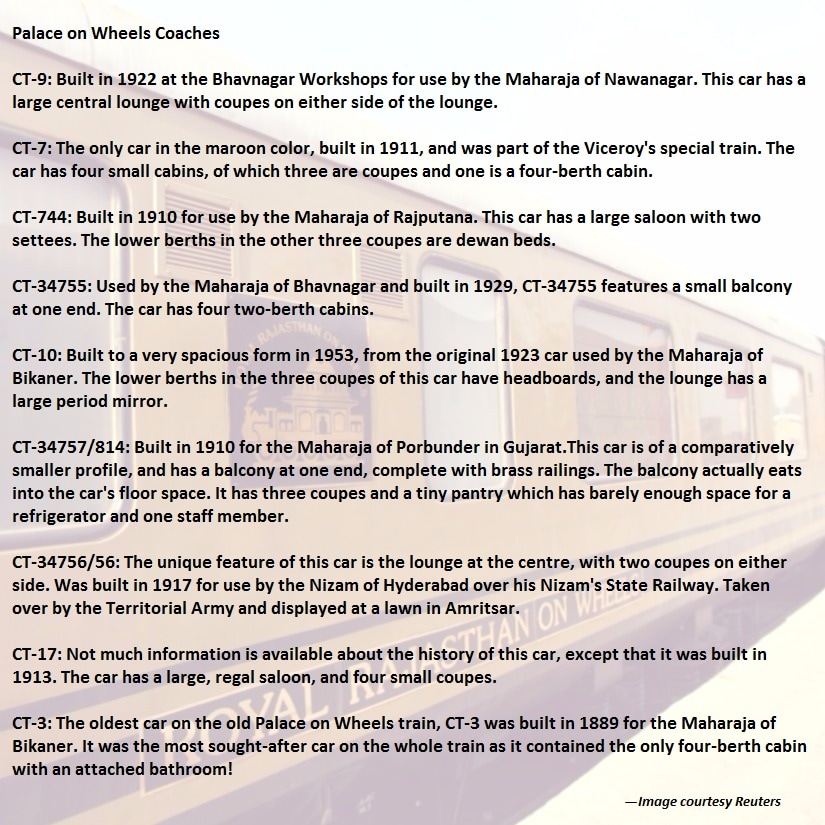A “Maharaja-style” wine and dine experience in over 100-year-old, luxurious rail coaches could soon be a possibility — if the Indian Railways’ plans to lease out eight such surviving royal saloons to hotel chains or tour operators are actualised.
After decades of dithering — that has caused rampant destruction of these Burma teak wood coaches belonging to a storied past — the Indian Railways, on 21 December 2017, floated an Expression of Interest seeking proposals from private firms to refurbish the bogeys and operate them as restaurants on a revenue-sharing basis on a 25-year lease.
At a meeting organised on 9 January 2018, representatives of five of the country’s top catering chains besides an internationally known travel firm showed interest.
According to the Indian Railways Fan Club Association website, the Indian Railways inherited 17 royal saloons of the maharajas of yore. Of these, only nine have survived. Some years ago, the 1917-built royal car used by the Nizam of Hyderabad was sold at a nominal rate to the Territorial Army; which has renovated and placed it at one of its lawns in Amritsar.
The remaining eight — left to the vagaries of India’s changing weather conditions at an open space at New Delhi’s National Rail Museum — have been crumbling away. The ramshackle condition of these rail cars is borne out in these pictures:
Manufactured between 1889 and 1922, the rail cars (that ran on meter gauge lines) had remained in the personal use of the maharajas of the princely states of Rajputana, Bhavnagar, Bikaner or Porbunder. After the accession of states in 1947, these were taken over by the Indian Railways, but continued to idle away in different railway zones.
In 1980, the Indian Railways Catering and Tourism Corporation firmed up an agreement with the Rajasthan Tourism Development Corporation to run the first Palace on Wheels train. The luxury train started operations in 1982, but services were discontinued in 1992 after the coaches became unserviceable.
“But these rail cars continue to remain priceless property, offering a unique brand,” a senior railway official said. It is estimated that (at an approximate cost of Rs 2.5 crore each) an amount of about Rs 20 crore will need to be borne to refurbish the eight coaches. “The task is best left to the private sector, as heritage conservation has remained a low-priority area for the Indian Railways,” said G Shankar, secretary of the Steam Railway Society.
The current chairman of the Railway Board Ashwani Lohani, in his earlier stint as the chairman and managing director of the Madhya Pradesh Tourism Development Corporation, had started the rail coach restaurant concept by launching the “Shane-e-Bhopal Express”.
Apart from the individual initiatives of officers such as Ashwani Lohani, the Indian Railways has neglected heritage conservation needs. Against the 11,000 locomotives that existed in running condition at the peak of the “steam era” in the ’70s, barely about 25 have survived; a majority of these have been cut up and sold off as scrap in past decades.
The list of the “black beauties” that have vanished includes one called “Chittranjan” — the first engine to have been manufactured at the Chittranjan Locomotive Works, and inaugurated by the late Rajendra Prasad in 1948. The “Antim Sitara” — the last steam loco to have rolled out of the factory in 1972 — has also been lost.











